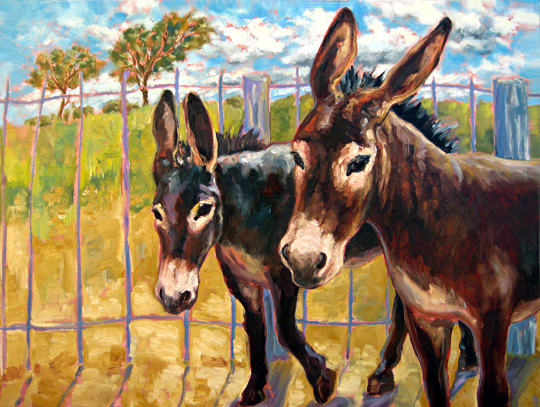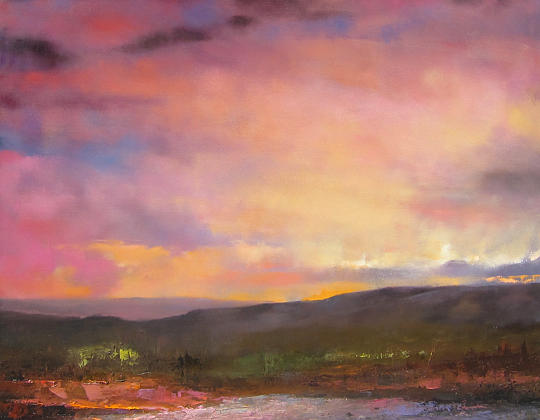 | |
| Afternoon in Provence 36"x48" by Judy Feldman |
 |
| Sculptures by Jeffrey Maron |
 |
| Cleo on the Deck 40"x30" by Judy Feldman |
 |
| Sculpture by Jeffrey Maron |
“Well, he said, we were both exposed to art at home, since Mom was an artist who taught classes in the house and exhibited her paintings there. Plus, she always took us to museums and encouraged our interest in art.”
Jeff became an artist long before I did, and our mother was always so proud of his work. (My father, a lawyer, struggled with his lack of a regular job!) When I started painting, I think all the information I had absorbed from my mother flooded my brain and propelled me to follow that artistic path. I noticed that there is another artist at Wilde Meyer whose mother is a well-known artist. So, maybe there is an art gene!
 |
| Significance 40" x 60" by Gregg Rochester |
 |
| The Present 41" x 41" by Jacqueline Rochester |
My mother didn’t actively encourage us to be artists. Two of my three brothers are writers, and the third is an educator. I pursued a psychology career, and when I began painting, I was afraid to show my mother my work, thinking she would be critical. But, she was actually very supportive, and she pushed me to paint in a larger format.”
Gregg’s work focuses on the landscapes he has seen and loved. They are not a realistic rendition; rather a contemporary vision of his landscape memories. He says, “I seek to convey the eloquence and the art of the land and sky in my work, to bring a touch of it inside our living spaces so that it can remind us of our wholeness, to bring us back to what is right.”
 |
| Another Realm 46"x40" oil on canvas by Gregg Rochester |
In Gregg’s large painting entitled “Another Realm,” he interprets the rolling Wisconsin hills in his own fashion, portraying them graphically, with strong hues and interesting textures. “Another Life” is a more southwestern image, with desert plants in the foreground, the high color of the sun in the midline and the sunlit mountains in the background. (Although this painting is essentially divided into thirds, I think it’s very effective.)
 |
| Another Life 48" x 48" by Gregg Rochester |
“A Thousand Whispers” could be many different places, even one in your imagination. The path of colored stones leads us to an unknown destination; the viewer can feel the warmth of the sun on the flowered field and the sounds of whispering insects.
 |
| A Thousand Whispers 48" x 48" by Gregg Rochester |
So, can you be an artist, even though you don’t think you have the art gene? Of course! I believe that as long as you have the interest and willingness to pursue a passion, you’ll succeed. Gregg Rochester agrees, and says that anyone can make art at any age, as long as you find what you love and incorporate it into your art. We have so much beauty surrounding us in Arizona, it’s easy to be inspired.































